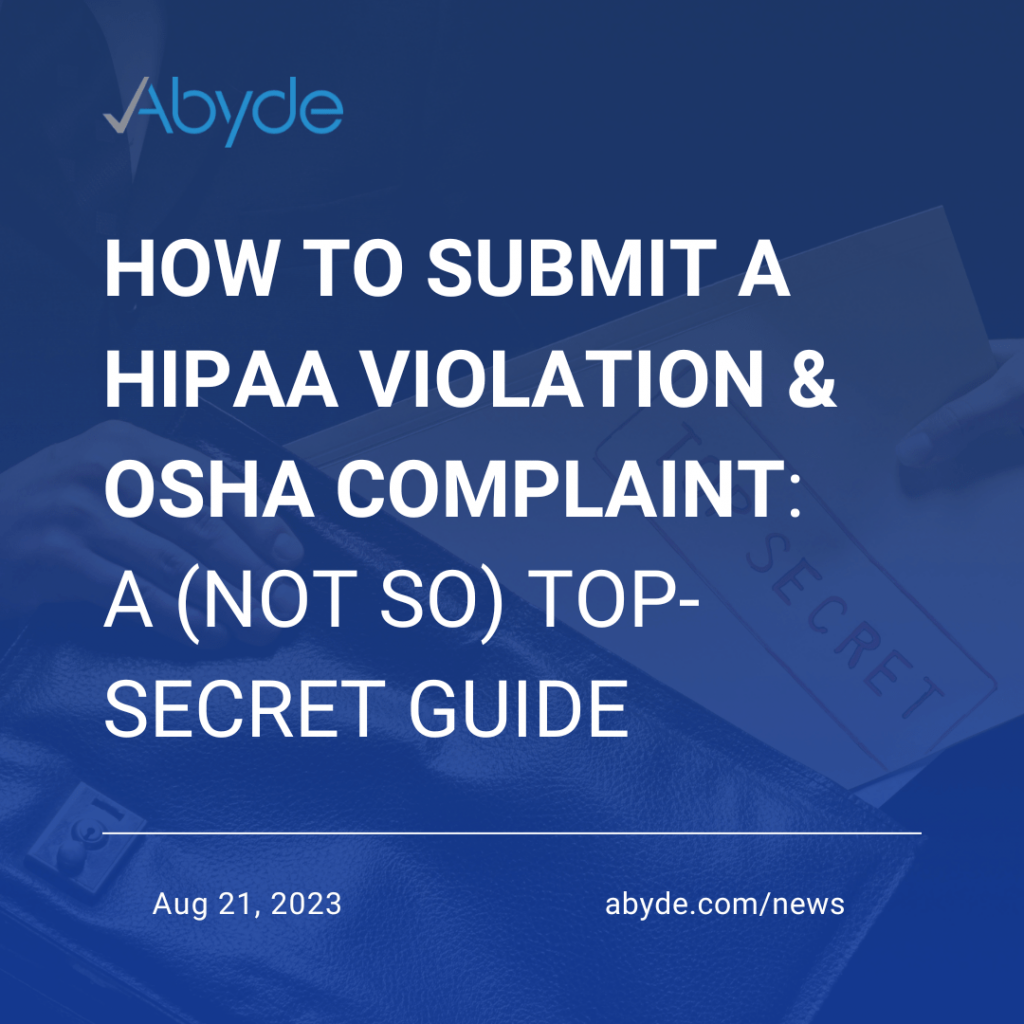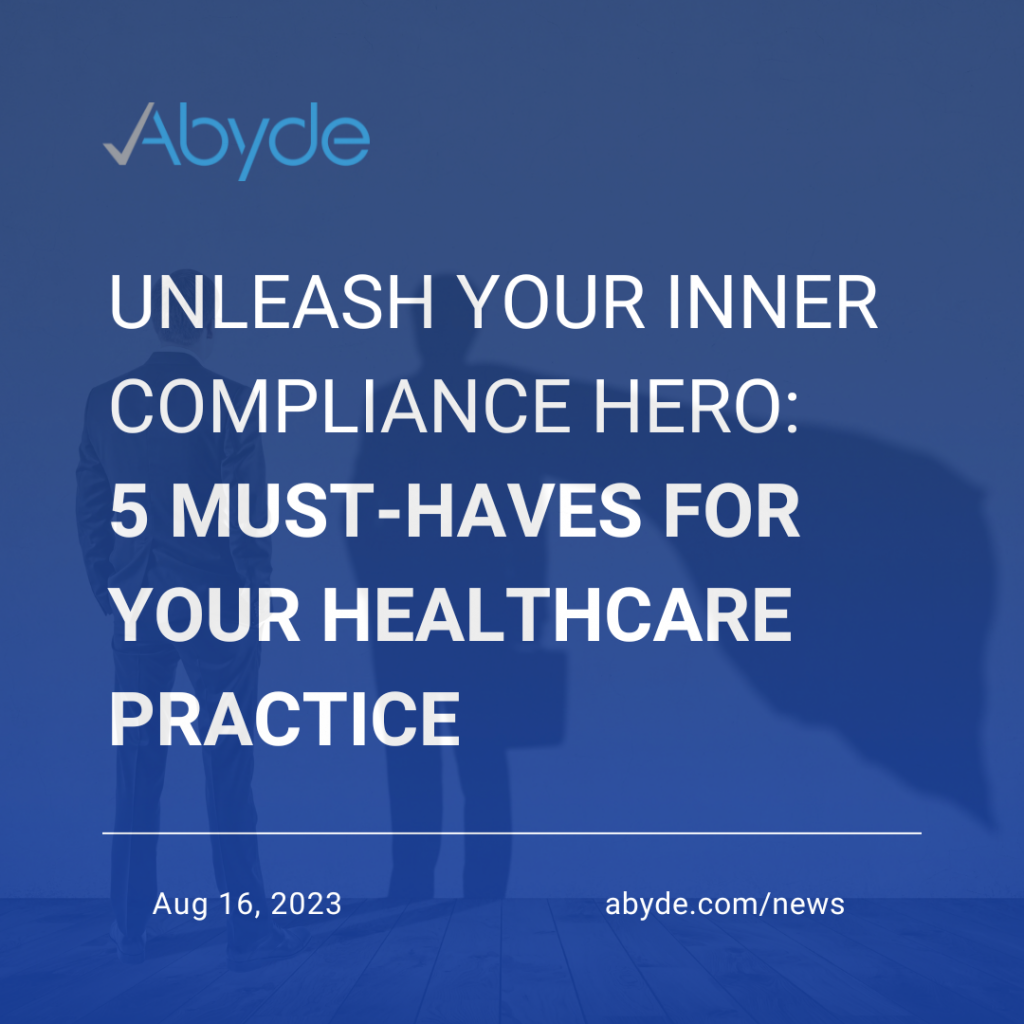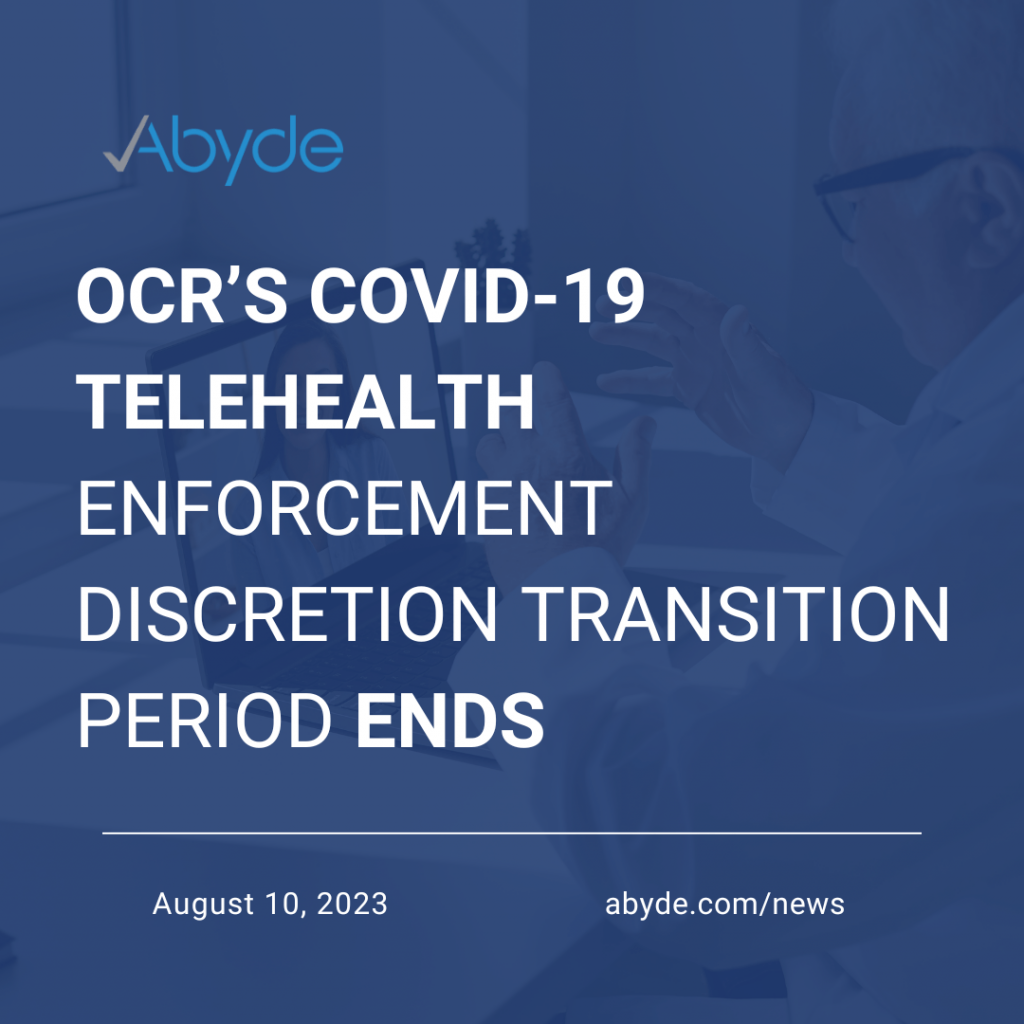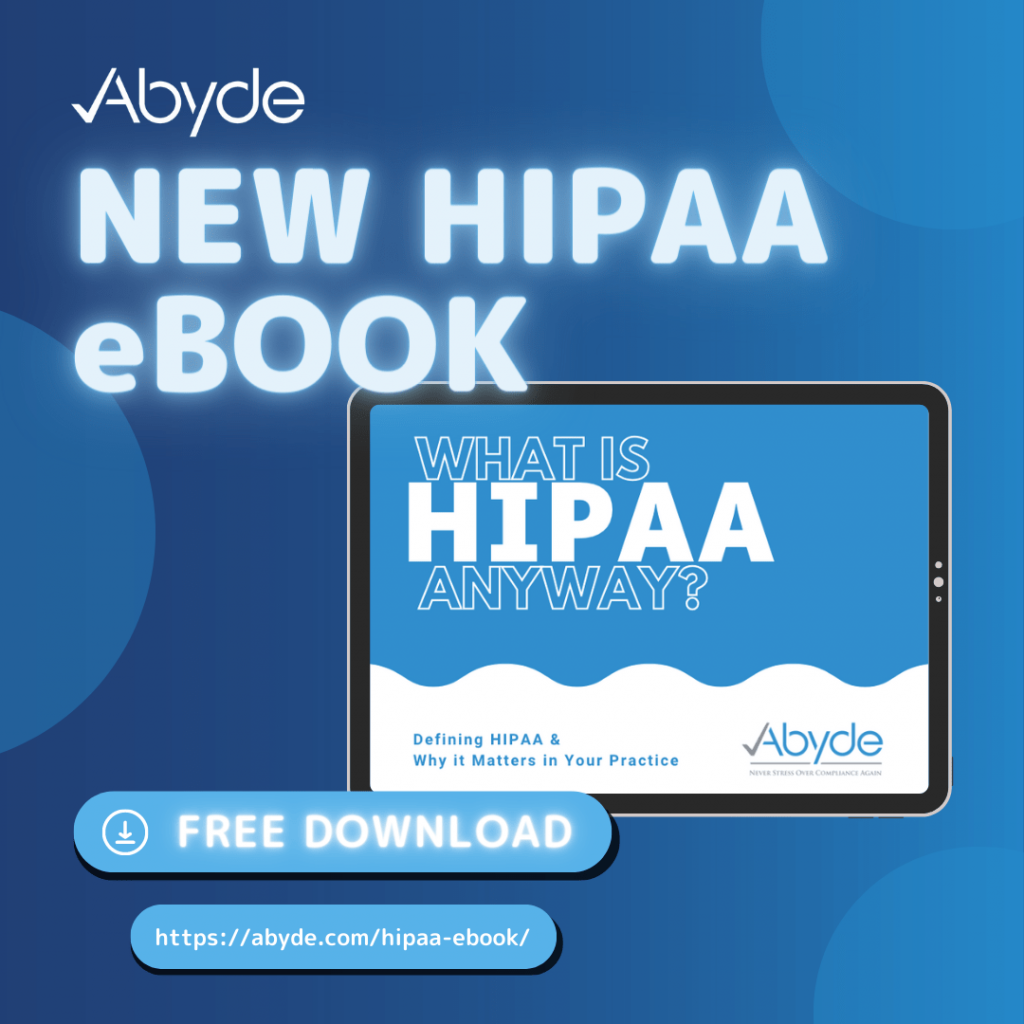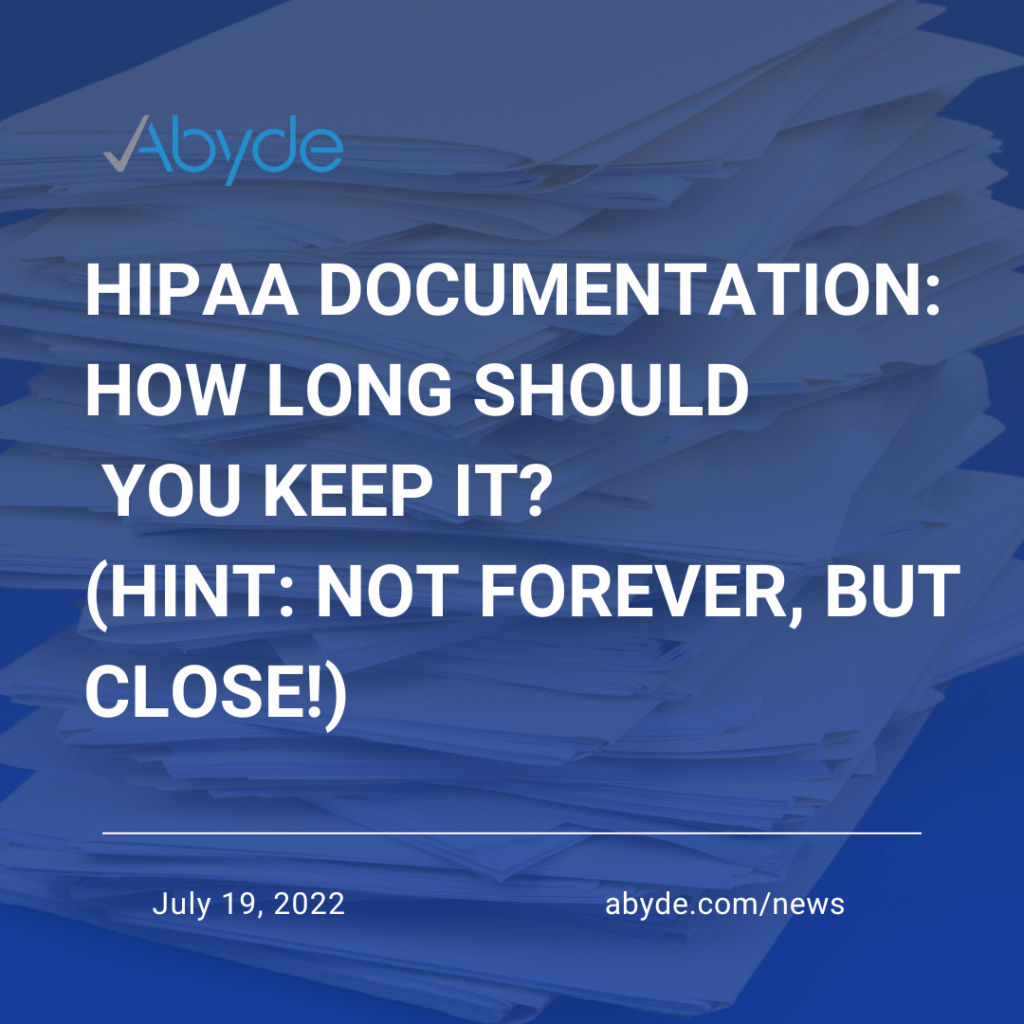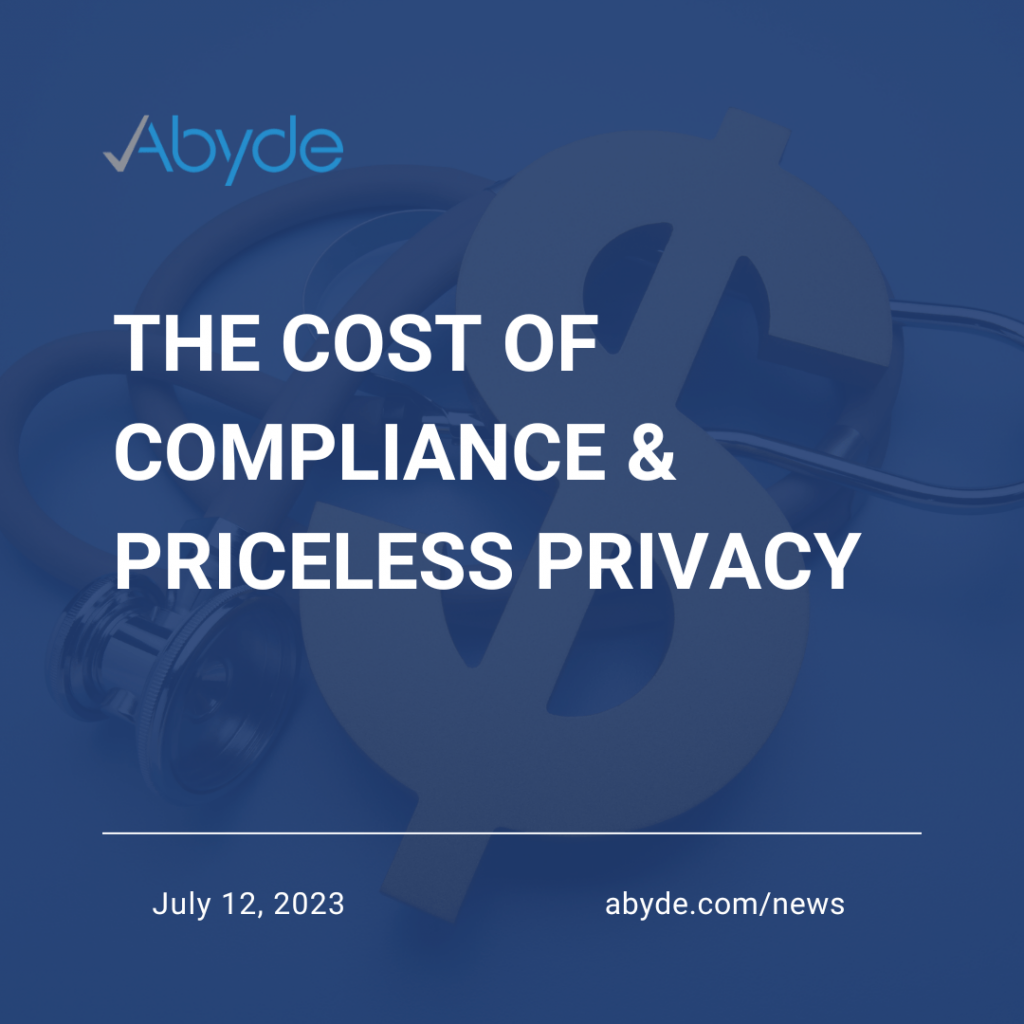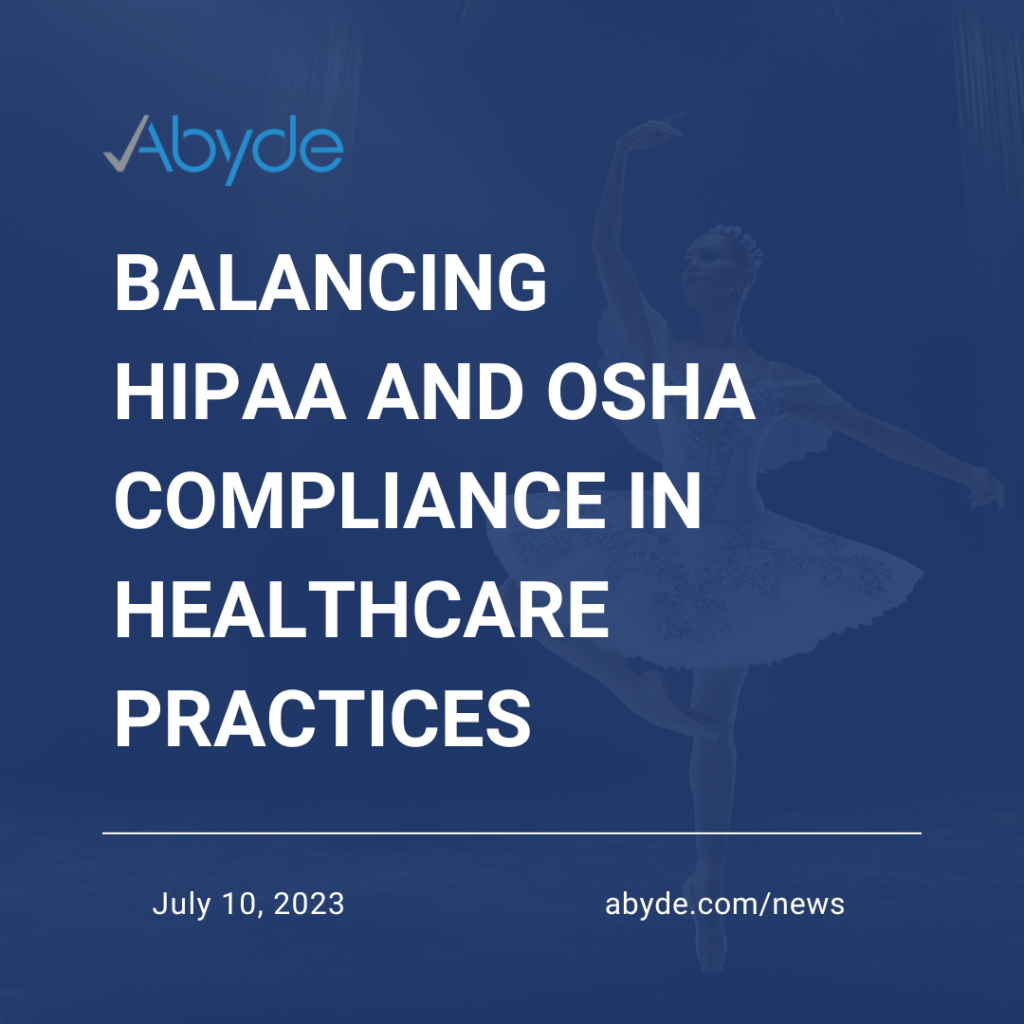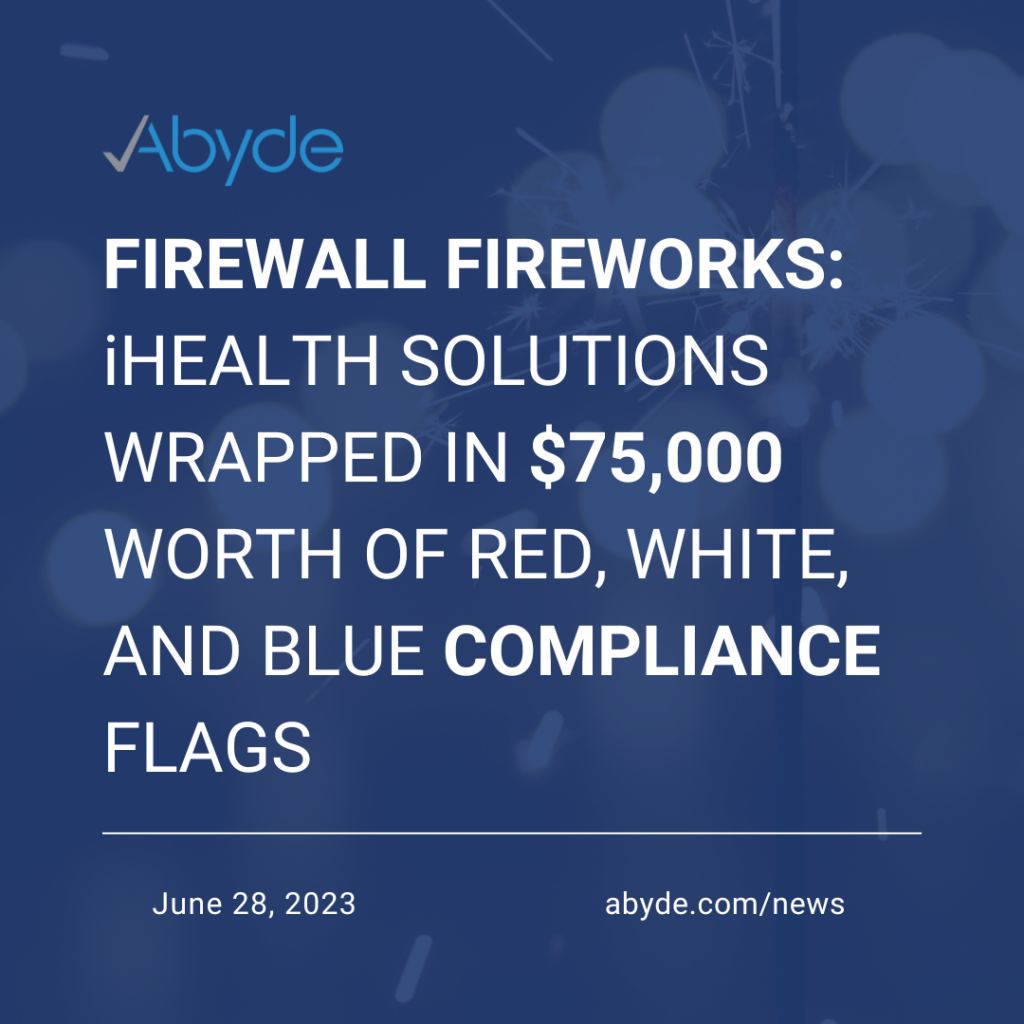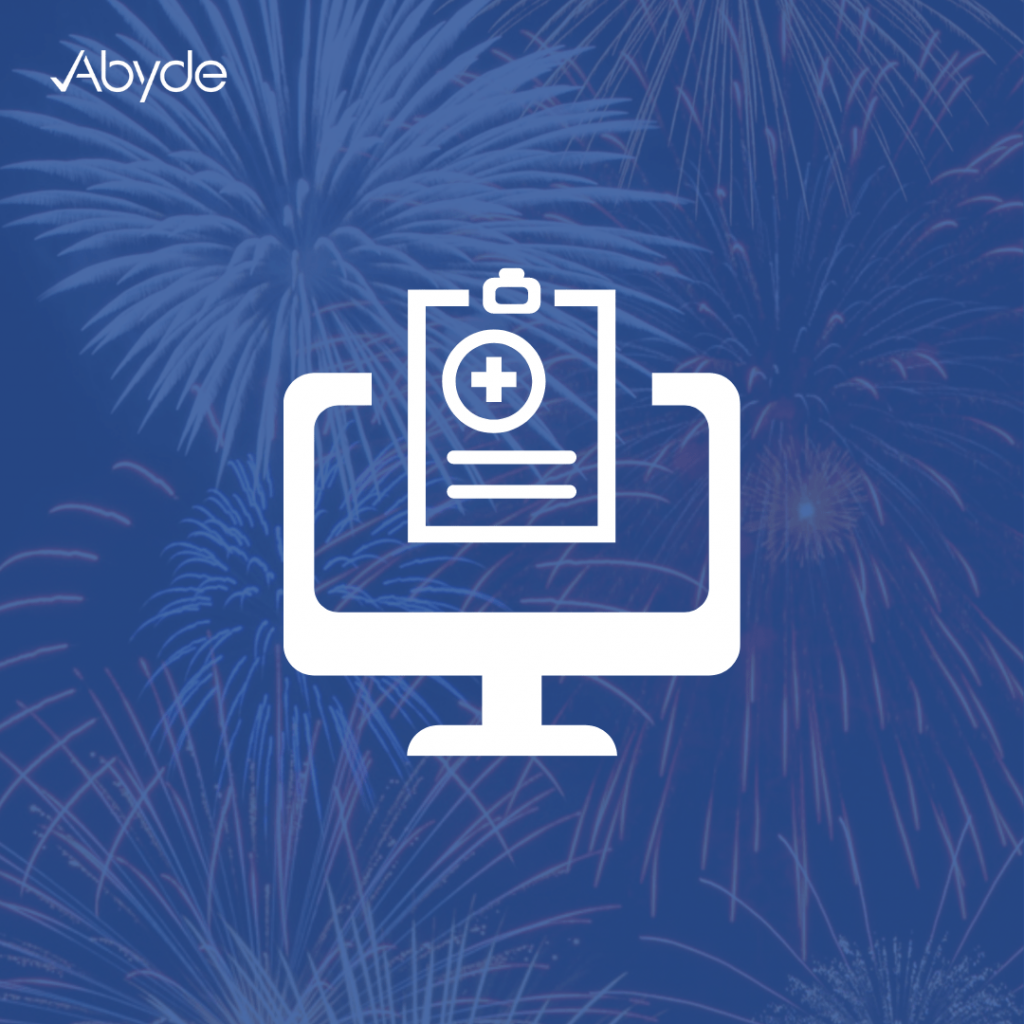August 21, 2023 HIPAA and OSHA: two acronyms that sound like they could be distant cousins of R2-D2 from “Star Wars,” but they’re actually heavyweights in the worlds of healthcare and occupational safety. Brace yourselves as we venture into the exciting universe of privacy policies and safety protocols – with a side of sass! Reporting a HIPAA Violation – The “No Peeking Allowed” Rule HIPAA, not to be confused with a hippo or a new dance craze, is all about safeguarding your medical secrets. Here’s how you can report a violation in case someone’s trying to sneak a peek at your X-rays: Filing an OSHA Complaint – Because Safety First, Always If you’ve spotted something at work that screams, “I’m a hazard, come find me!” it’s time to put on your imaginary superhero cape and report an OSHA violation: Why It’s Important HIPAA OSHA Contact Information for Reporting Violations Got a pen and paper? Here’s where you send those pesky complaints: HIPAA’s Secret Keepers OSHA’s Safety Squad HIPAA and OSHA might not be the riveting dinner party conversation starters, but they know how to throw a compliance party. By following these (not so) top-secret instructions, you’ll be on your way to becoming a healthcare privacy hero or workplace safety wizard. So, the next time someone violates HIPAA or OSHA, remember: You’ve got the power (and this handy guide) to keep everyone straight and narrow! Note: If you need assistance with HIPAA compliance, tools like those offered by Abyde may be beneficial for healthcare providers in navigating the complex landscape of regulatory compliance. Always consult with legal professionals or compliance experts to ensure you follow the correct procedures for your situation.
Unleash Your Inner Compliance Hero: 5 Must-Haves for Your Healthcare Practice
August 16, 2023 Greetings, mighty guardians of healthcare excellence! Amidst your battles against the forces of illness and ailment, another battlefield requires your attention – the realm of compliance. Fret not; we are here to guide you with a touch of heroism and a sprinkle of wit. Join us as we unveil the essential tools every compliance hero needs to conquer the challenges of HIPAA and OSHA. Prepare to wield these mighty weapons and pave your way to triumphant healthcare success! 1. Risk Assessment: Unmasking the Vulnerabilities Imagine your practice as a fortress, where every room holds a secret passage. Two crucial risk assessments must be your trusty maps to ensure your stronghold is impenetrable. First, dive into HIPAA’s Security Risk Analysis requirement, which is like using a magnifying glass to examine every nook and cranny of your digital kingdom. Identify potential data breaches, shore up weak spots in your electronic walls, and ensure your patients’ information remains untouchable. Second, take a cue from OSHA’s Facility Risk Assessment recommendation – it’s the blueprint for your physical realm. Uncover hazards lurking in plain sight, from slippery floors to sneaky cords. Patch up the weak points, ensuring your practice is compliant but also safe and secure. Remember, while villains might seek out vulnerabilities, you’ll be miles ahead, anticipating their every move with a comprehensive risk assessment strategy! 2. Training for Doctors and Staff: Superheroes in the Making Training sessions might sound as fun as watching paint dry, but trust us, they’re your secret weapon! Educating your doctors and staff on compliance procedures is like giving them the power to stay out of trouble. Plus, it’s an opportunity to turn training into a game. Who can spot the most compliance loopholes? The winner gets bragging rights and an extra cookie at lunch! 3. Specific Policies, Procedures, and Forms: The Rulebook of Heroes Every superhero needs a rulebook, and for your practice, it’s your specific policies, procedures, and forms. These are like your superhero code – the guidelines that keep everyone on the right track. Make them crystal clear, so even the busiest doctor can understand them. And remember, humor is welcome here, too – “Please don’t leave confidential papers in the coffee machine” might just make someone’s day. 4. You wouldn’t invite a dubious character into your lair, right? Vendors are your practice’s allies, but only when you rigorously evaluate them. Think of them as potential sidekicks in your compliance journey. Ensure they’re well-intentioned and legally bound to keep your secrets. That’s where HIPAA’s Business Associate Agreements swoop in, forming the superhero pact that safeguards your patients’ data. But wait, there’s more! Just like any tag team, you share responsibility. OSHA’s Joint Responsibility requirement insists that your vendors are as committed to physical safety as you are. So, when inviting vendors to your “Compliance Hero Squad,” make sure they’re not just capes and masks but true partners who stand by you through thick and thin. 5. Expert Support: The Batphone of Compliance Even Batman needs Alfred, right? Expert support on speed dial can save the day when the compliance waters get murky. Whether it’s a sudden policy change or deciphering complex regulations, these experts are like your trusty sidekicks. Think of them as the Batphone of compliance – always ready to guide you out of a tight spot! Conclusion: And there you have it, valiant healthcare defenders – the Fabulous Five tools to fortify your independent practice against the storms of compliance challenges. But hold tight, brave souls, for compliance needn’t be a gloomy ordeal. Sprinkle in a dash of wit, a dose of creativity, and wrap it all up with the indomitable spirit of a superhero. You’ll conquer even the mightiest of regulatory dragons with an infectious grin. Stay vigilant, stand tall in compliance glory, and let those healing vibes radiate far and wide! But before you start to fret about draining your coffers or deciphering the enigmatic tongues of HIPAA and OSHA, fear not! Enter Abyde, the ultimate weapon in your arsenal. Our cutting-edge software solutions are designed to make the above (and beyond) a breeze, letting you return to your noble quest of patient care and prosperity. Reach out to our experts, and witness firsthand how compliance becomes as easy as donning a superhero cape!
OCR’s COVID-19 Telehealth Enforcement Discretion Transition Period Ends
August 10, 2023 OCR is Turning Up the Heat as their Telehealth Enforcement Discretion is Sizzling Out! Ah, the sweet heat of summer! That particular time when our ice creams seem to have a faster meltdown than our resolutions of getting that “beach body” (for the third year in a row). Speaking of melting, there’s a hot update simmering in the healthcare compliance oven: the OCR’s telehealth enforcement discretion transition period is officially sunsetting. But before you start sweating more than after a midday August jog, let’s fan ourselves with the facts. What’s Cooking? During the pandemic’s peak, the OCR graciously set our minds (and compliance teams) at ease with a relaxed telehealth enforcement period. Because of the implications of the Public Health Emergency, the government loosened the restrictions on telehealth applications to ensure that patients were still receiving the necessary care needed in a practical manner. Unfortunately, like most summer love stories, the enforcement discretion had to come to an end. How Can You Protect From Getting Burned? The sun might be blazing outside, but you don’t have to get scorched. Here’s a simple telehealth-protection formula:
What is HIPAA, Anyway? Abyde’s HIPAA eBook Defines HIPAA & Why it Matters in Your Practice
August 1, 2023 Navigating the complexities of HIPAA compliance can be overwhelming, especially when you have numerous other pressing concerns in your field. As healthcare professionals, you might be familiar with HIPAA, but it’s understandable that it’s not always at the top of your priority list. However, ensuring compliance with HIPAA is crucial to safeguarding patient privacy, protecting sensitive data, and avoiding potential scrutiny from government audits. In response to the need for a practical and concise approach to HIPAA compliance, Abyde created our own one-of-a-kind HIPAA eBook. This convenient reference aims to provide your practice with a comprehensive yet easy-to-follow overview of HIPAA’s role in your field, empowering you to confidently address compliance challenges without being weighed down by complex regulatory jargon. This eBook starts by demystifying HIPAA, offering a clear overview of its relevance in your specific healthcare field. Whether you run a medical practice, dental clinic, or any other healthcare facility, this guide tailors the information to your unique needs, making it easier to understand the specific requirements that apply to your practice. We recognize your busy schedule, so the eBook streamlines the essential steps to achieve HIPAA compliance. It breaks down the Privacy Rule and Security Rule into manageable segments, providing practical insights and real-life examples relevant to your daily operations, and offers a simplified approach to conducting a risk assessment. It guides you through identifying potential weaknesses in your data handling processes, allowing you to proactively address security gaps and minimize the risk of data breaches. Electronic Protected Health Information (ePHI) is prevalent in modern healthcare practices, necessitating robust data security measures. Abyde’s eBook also emphasizes the importance of safeguarding ePHI and provides expert recommendations on encryption, secure data transmission, and strong password policies. While the intricacies of HIPAA compliance might not be your primary focus, ensuring your practice adheres to these regulations is paramount for patient trust, data security, and legal protection. Abyde’s free HIPAA eBook offers the perfect solution, providing a concise and comprehensive overview of HIPAA’s role in your field. Download your HIPAA eBook today!
SR-Hey, Have You Conducted a Security Risk Analysis?
July 28, 2023 In the ever-evolving landscape of healthcare, the safeguarding of sensitive patient information is of paramount importance. To protect patient privacy and maintain health data integrity, the Health Insurance Portability and Accountability Act (HIPAA) sets stringent standards for compliance. One of the vital components in achieving HIPAA compliance is conducting Security Risk Analyses (SRAs). Understanding HIPAA and its Compliance Requirements HIPAA, enacted in 1996, is a landmark piece of legislation designed to protect the privacy and security of patients’ health information. The regulation establishes a set of rules that healthcare providers, health plans, and other covered entities must follow to ensure the confidentiality and integrity of patients’ protected health information (PHI). Failure to comply with HIPAA can lead to severe consequences, including hefty fines and reputational damage. But we all knew that, right? What is a Security Risk Analysis (SRA)? Now this is what we need to know! A Security Risk Analysis systematically evaluates an organization’s information technology infrastructure, policies, and procedures to identify potential vulnerabilities and risks to the confidentiality, integrity, and availability of PHI. An SRA aims to assess the organization’s current security measures, identify weaknesses, and implement necessary safeguards to mitigate risks effectively. Why is an SRA Important for HIPAA Compliance? Identifying Vulnerabilities: An SRA helps healthcare organizations identify potential vulnerabilities in their systems and processes that could lead to unauthorized access or disclosure of PHI. By understanding these weaknesses, organizations can take proactive measures to address them before any security breach occurs. Preventing Data Breaches: Data breaches in healthcare can expose sensitive patient information, leading to significant legal and financial consequences. Conducting an SRA helps preemptively prevent data breaches by bolstering security measures and ensuring compliance with HIPAA’s Security Rule. Mitigating Risks: Risks in healthcare are constantly evolving due to new cybersecurity threats and technological advancements. Regular SRAs allow organizations to stay ahead of potential risks and adopt measures to mitigate them effectively. Tailoring Security Measures: Each healthcare organization has unique systems and processes. An SRA helps identify specific security needs and allows the organization to tailor security measures to address its individual risks effectively. Demonstrating Compliance: HIPAA compliance requires organizations to conduct regular SRAs. By documenting assessments, organizations can demonstrate their commitment to safeguarding patient data, which is essential during audits and investigations. Improving Security Posture: SRAs are not just a checkbox exercise; they provide valuable insights into the organization’s overall security posture. Based on the analysis results, organizations can continually implement improvements to enhance their security measures. Legal and Reputational Protection: A data breach can tarnish an organization’s reputation and erode patient trust. By conducting SRAs and implementing robust security measures, healthcare entities can enhance their legal and reputational protection. At Abyde, we take a distinctive approach to SRAs by offering a personalized and tailored experience for you and your practice. Think of our SRA module as your dedicated companion, guiding you through the process of identifying vulnerabilities specific to your practice. Recognizing that each practice is unique, our intuitive software will present only the questions relevant to your business as you respond. This streamlined approach is one of the many ways we ensure simplicity and effectiveness in achieving your compliance goals. The protection of patient data is not only a legal obligation but also an ethical responsibility for healthcare organizations. HIPAA compliance is critical in ensuring that patient information remains secure and confidential. Regular SRAs are an indispensable aspect of HIPAA compliance, allowing organizations to identify vulnerabilities, prevent data breaches, and mitigate risks effectively. By investing in security measures and staying proactive in their approach, healthcare organizations can reinforce patient trust and safeguard the integrity of their services in today’s increasingly digital healthcare landscape.
HIPAA Documentation: How Long Should You Keep It? (Hint: Not Forever, But Close!)
July 19, 2023 Step into the world of healthcare compliance, where regulations intertwine with sensitive data, and privacy is paramount. Today, we delve into the intricacies of HIPAA documentation, unraveling the enigma that shrouds its retention period. Understanding the Birth of HIPAA Documentation In the complex world of healthcare, the Health Insurance Portability and Accountability Act (HIPAA) emerged as a key legal framework. Alongside this landmark legislation came the advent of meticulous record-keeping, aptly named HIPAA documentation. It became the guardian of sensitive information, ensuring its security within healthcare organizations. Deciphering Retention Periods Retention, the art of keeping records for an appropriate duration, is at the heart of HIPAA compliance. A six-year retention period is a general guideline for most HIPAA privacy and security documentation. However, it’s crucial to note that specific regulations may vary based on location and organization. Always consult the relevant governing authorities to stay current with your local requirements. Embrace Letting Go What happens when those six years pass? Do we bid a grand farewell to our documents? Not exactly. HIPAA presents an exit strategy for us, an opportunity to clear the clutter. Once the retention period ends, it’s time to dispose of the documentation securely. Shredding physical copies or ensuring the proper deletion of electronic files helps maintain privacy and prevent unauthorized access. Exceptions and Surprises As with any regulatory landscape, exceptions and surprises lie in wait. HIPAA documentation is the same. Certain records, such as incident reports and breach notifications, may necessitate longer retention periods, sometimes indefinitely. Staying informed about evolving regulations and recommendations from relevant authorities is essential. After all, compliance is a journey that demands ongoing vigilance. The Digital Frontier In the age of digital transformation, HIPAA documentation has evolved beyond traditional paper trails. Electronic Health Records (EHRs) have become a powerful ally, offering efficient storage and accessibility. However, the same rules apply to safeguarding digital records. Encryption, access controls, and regular backups are pivotal in protecting sensitive data, ensuring compliance in our increasingly interconnected world. As we conclude our expedition through the intricacies of HIPAA documentation, let us remember that compliance is not a mere bureaucratic exercise. It signifies a commitment to preserving patient privacy and security. Embrace the guidelines, adapt to exceptions, and bid farewell to records appropriately. HIPAA documentation has its time and purpose before gracefully moving on. Remember, maintaining HIPAA compliance goes beyond just documentation. It requires a comprehensive approach involving policies, procedures, training, and ongoing vigilance to protect patient privacy and maintain the security of sensitive health information. Abyde is a complete HIPAA compliance software designed to streamline compliance efforts and simplify the management of HIPAA documentation. It offers a range of features and services that assist healthcare providers in meeting their compliance obligations effectively. With Abyde, healthcare organizations can automate their HIPAA risk analysis, provide custom policies and procedures, provide employee training, and maintain documentation. It provides a centralized platform to securely store and manage important records, ensuring easy access when needed and significantly reducing the stress that comes along with HIPAA compliance.
The Cost of Compliance & Priceless Privacy
July 12, 2023 In a world where data privacy is paramount, and breaches make headlines faster than the speed of light, there’s a heavyweight champion ruling the healthcare industry—HIPAA (Health Insurance Portability and Accountability Act). While its intentions to protect patient data are noble, we often overlook the less glamorous side of HIPAA: the significant financial burden it imposes on healthcare providers. What’s worse? The cost of noncompliance. 1. The H for “Hefty”: When it comes to the cost of HIPAA, the first letter of the acronym seems to stand for “Hefty.” Implementing the necessary administrative, technical, and physical safeguards to protect patient data can be a financial mountain to climb. From implementing secure IT systems to training staff and conducting regular audits, healthcare providers find themselves pouring precious resources into HIPAA compliance. 2. Compliance: The Ultimate Budget Sinkhole: While maintaining patient privacy is crucial, it’s no secret that HIPAA compliance can drain the pockets of even the most financially prepared institutions. Investing in updated technology, encryption, firewalls, and secure storage systems can cost an arm, a leg, and a few digits from your credit card pin. Suddenly, the “HIPAA” acronym takes on a new meaning: “Hazardously Intricate Price for Administrative Assurance.” 3. The Cost of the Inevitable “Oops”: Despite the best precautions, data breaches can still rear their ugly heads. The cost of mitigating the aftermath of a breach can send chills down the spines of healthcare providers. In addition to the financial implications, there’s the added toll on reputation, patient trust, and potential lawsuits. So, while HIPAA compliance can be expensive, the cost of non-compliance and its consequences is an even more bitter pill to swallow. 4. Training: The Education of Expensive Minds: To stay compliant with HIPAA regulations, healthcare providers must educate their staff on privacy policies and procedures. However, the cost of training programs, workshops, and seminars can feel like a merciless attack on your budget. With every mandatory training session, the price tag keeps growing. So, remember, when you’re shelling out for HIPAA compliance, you’re also investing in a future where your staff knows their way around patient privacy like a seasoned secret agent. 5. The Silver Lining of Investing in Privacy: While the cost of HIPAA compliance might seem overwhelming, it’s crucial to remember the underlying purpose of these regulations. HIPAA aims to protect patient data from falling into the wrong hands, ensuring their privacy and security. Ultimately, the investment in HIPAA compliance is an investment in patient trust, confidentiality, and the overall integrity of the healthcare industry. The cost of HIPAA compliance can indeed be a bitter pill to swallow for healthcare providers. From the financial burdens of implementing robust systems and training programs to the potential aftermath of data breaches, it’s a financial journey that requires careful navigation. However, it’s essential to view this investment as an opportunity to reinforce patient trust and safeguard sensitive information. So, while the price tag might be hefty, the benefits of HIPAA compliance far outweigh the cost. To alleviate the challenges and costs associated with HIPAA compliance, healthcare providers often seek the assistance of specialized compliance solutions. Abyde understands the complexities of HIPAA and offers a comprehensive suite of tools to simplify compliance processes. With our user-friendly platform, healthcare providers can navigate the intricacies of HIPAA regulations without breaking a sweat (or the bank). By leveraging Abyde’s services, practices can automate various compliance tasks, such as risk assessments, custom policy creation, employee training, and incident response. The Abyde all-in-one solution is designed to streamline the compliance journey, reducing the time and financial investments required. Practices can benefit from personalized support and up-to-date resources to stay ahead of the ever-evolving regulatory landscape. By partnering with a trusted compliance partner like Abyde, organizations can focus on delivering quality care while maintaining the highest standards of data privacy and security. Remember, when it comes to HIPAA, the price of privacy is priceless.
Balancing HIPAA and OSHA Compliance in Healthcare Practices
July 10, 2023 Compliance requirements can sometimes feel like a dance routine, and for healthcare practices, the choreography involves the overlapping steps of HIPAA and OSHA. Striking the right balance between protecting patient privacy and ensuring employee safety can be challenging but crucial. Here are some practical steps healthcare practices can take to navigate the convergence of HIPAA and OSHA compliance without drama or theatrics. Understanding HIPAA and OSHA: 1. HIPAA Compliance: HIPAA stands as the guardian of patient privacy and data security. It sets the standards for electronic transactions, privacy rules, and security measures. Healthcare providers, health plans, and clearinghouses are obligated to implement safeguards to protect sensitive health information. 2. OSHA Compliance: OSHA is responsible for maintaining a safe and healthy working environment for employees across all industries, including healthcare. It focuses on identifying workplace hazards, providing safety training, and ensuring proper record-keeping for occupational injuries and illnesses. Managing the Overlap: 1. Assess Risks: Begin by conducting a thorough risk assessment considering HIPAA and OSHA requirements. Identify potential areas where these compliance realms intersect, such as situations where employee safety might come into contact with patient information. 2. Develop Policies and Procedures: Craft policies and procedures that encompass both HIPAA and OSHA compliance. Ensure they address privacy, security, patient safety, employee training, and hazard prevention. Strive for clear and concise guidelines that are easily understood by staff. 3. Employee Education and Training: Educate and train your employees on both HIPAA and OSHA regulations. Empower them with the knowledge to protect patient privacy and maintain a safe workplace. Integrate training sessions that highlight the areas of overlap, emphasizing the importance of handling sensitive data in a secure manner. 4. Safeguarding Patient Privacy: Implement measures to protect patient privacy while maintaining a safe work environment. Establish designated areas for confidential discussions and restrict access to authorized personnel only. Remember, the aim is to achieve a balance that safeguards patient information without compromising employee safety. 5. Workplace Safety: Regularly assess the physical environment for potential hazards and implement protocols to address them promptly. Focus on proper storage and disposal of hazardous materials, ergonomics, and infection control practices. Encourage a safety culture that promotes vigilance and preventative measures. 6. Incident Reporting and Documentation: Establish a streamlined process for reporting incidents that may involve both patient information and employee safety. Emphasize the importance of accurate documentation while maintaining patient confidentiality. Clear reporting procedures help identify areas for improvement and drive proactive safety measures. 7. IT Security: Maintain robust IT security measures to protect electronic patient health records from unauthorized access or breaches. Stay vigilant with software updates, conduct regular risk assessments, and educate employees on best practices for data security and privacy. 8. Compliance Audits and Monitoring: Regularly conduct compliance audits to ensure adherence to both HIPAA and OSHA requirements. Monitor compliance, review incident reports, and identify areas that need improvement. Assign designated staff members to oversee compliance efforts and keep the focus on continuous improvement. Finding a rhythm between HIPAA and OSHA compliance is essential for healthcare practices striving to protect patient privacy while maintaining a safe working environment. By assessing risks, developing comprehensive policies, and providing education and training, healthcare organizations can achieve the delicate balance required. Compliance doesn’t need to be a stressful rehearsal for things to go wrong. It’s a practical endeavor that protects both patients and employees alike. At Abyde, we strive for a harmonious dance where patient privacy and workplace safety are the show’s stars. Our revolutionary software bundles HIPAA & OSHA compliance for healthcare, making the balancing act of compliance easy for practices.
Firewall Fireworks: iHealth Solutions Wrapped in $75,000 Worth of Red, White, and Blue Compliance Flags
June 28, 2023 The U.S. Department of Health and Human Services Office for Civil Rights (OCR) has decided to celebrate the 4th of July a bit differently this year. No, they’re not hosting a BBQ or a picnic. Instead, they’ve resolved a blazing inquiry with iHealth Solutions, a Kentucky-based firm providing a whole array of IT services to healthcare providers, including coding, billing, and onsite IT support. Like leaving the fireworks out in the rain before the big show, iHealth Solutions committed a significant faux pas by allowing the protected health information of 267 people to be as unguarded as a picnic basket at a bear convention. “HIPAA business associates must protect the privacy and security of the health information they are entrusted with by HIPAA-covered entities,” said OCR Director Melanie Fontes Rainer. “Effective cybersecurity includes ensuring that electronic protected health information is secure, and not accessible to just anyone with an internet connection.” In 2017, the sparklers were lit when a report emerged stating that iHealth Solutions had experienced an unauthorized transfer of protected health information from its unsecured server. This information wasn’t just your average email addresses and phone numbers – the information included confidential information, including patient names, birth dates, Social Security numbers, diagnoses, treatment information, and medical histories. The investigation detected a potential failure on iHealth Solution’s part to adequately assess risks and vulnerabilities to electronically protected health information across the organization. So, what’s the big *BANG* at the end of this fuse? A pretty hefty $75,000 civil monetary penalty, paid to OCR by iHealth Solutions. The company also agreed to a corrective action plan which includes several measures to ensure the protection of electronic protected health information. These steps include conducting a thorough analysis to identify risks and vulnerabilities, implementing a risk management plan, evaluating changes that affect the security of information, and revising HIPAA policies and procedures as required. As a finale, iHealth will be under the watchful eye of OCR for two years, ensuring its compliance with the HIPAA Security Rule. Abyde helps organizations avoid catastrophes precisely like this one. Abyde is like the super-organized neighbor who prepares for the 4th of July celebrations months in advance, ensuring everyone’s safety and enjoyment. They’re not in the business of barbecues and fireworks but rather in making HIPAA compliance as smooth and worry-free as a classic American apple pie. So, as we celebrate our independence this July 4, let’s remember that freedom should never come at the expense of our security, especially when it involves our personal health information. Here’s hoping your barbecues are hot, your fireworks are safe, and your servers are secure!
Sparkling HIPAA Compliance: Igniting a Secure Healthcare Future
June 27, 2023 Do you ever feel like a plastic bag? Drifting through the wind…..not knowing how to handle HIPAA compliance for your small to midsize practice…? Well then you’re in the right place! You just gotta ignite the light…with Abyde to make your practice shine in HIPAA compliance. In the same way that Independence Day wouldn’t be complete without a spectacular firework display, the healthcare sector wouldn’t be complete without its own showstopper: Abyde’s HIPAA compliance software. While the connection between The Health Insurance Portability and Accountability Act (HIPAA) compliance and fireworks might seem like a stretch, when you consider the meticulous orchestration and impressive outcomes of both, the comparison starts to make sense. This connection isn’t just a cheap grab at holiday enthusiasm. It’s the Fourth of July for your patient data security. Getting Started with Compliance Like any grand firework show, the journey to HIPAA compliance starts with a spark, an understanding that the protection of patient data is a top priority. HIPAA compliance software is your match, ready to ignite the process. From there, it’s all about the careful handling and methodical planning to ensure this spark doesn’t turn into an uncontrollable blaze. Grasping HIPAA Regulations The path to becoming HIPAA compliant is like a firework’s upward trajectory: a careful climb towards the ultimate goal. This path is lined with understanding and implementing the various regulations, such as the Privacy Rule, Security Rule, Breach Notification Rule, and Enforcement Rule. Each rule is a step in the journey, each a single firework in your overall display. Achieving Compliance When a firework reaches its peak and explodes into a stunning array of color, that’s when the magic happens. Achieving HIPAA compliance is your practice’s moment to shine, the culmination of hard work and dedication. With the help of a robust compliance software solution like Abyde, this moment isn’t just a one-time event, but an ongoing performance, highlighted by routine risk assessments, audits, staff training, and more. Upholding Compliance After the last firework has faded, the work isn’t over. There’s clean-up to do and plans to make for the next display. Similarly, HIPAA compliance isn’t a one-and-done deal. Maintaining compliance is just as important as achieving it, requiring a continuous commitment to data security and regular reassessment of protocols. So, as we enjoy our summer barbecues and fireworks, let’s appreciate HIPAA compliance software like Abyde’s that helps healthcare providers put on their own show, protecting patient data and upholding industry standards. Just as fireworks add sparkle to a night sky, Abyde adds a layer of security and trust to our healthcare interactions.
